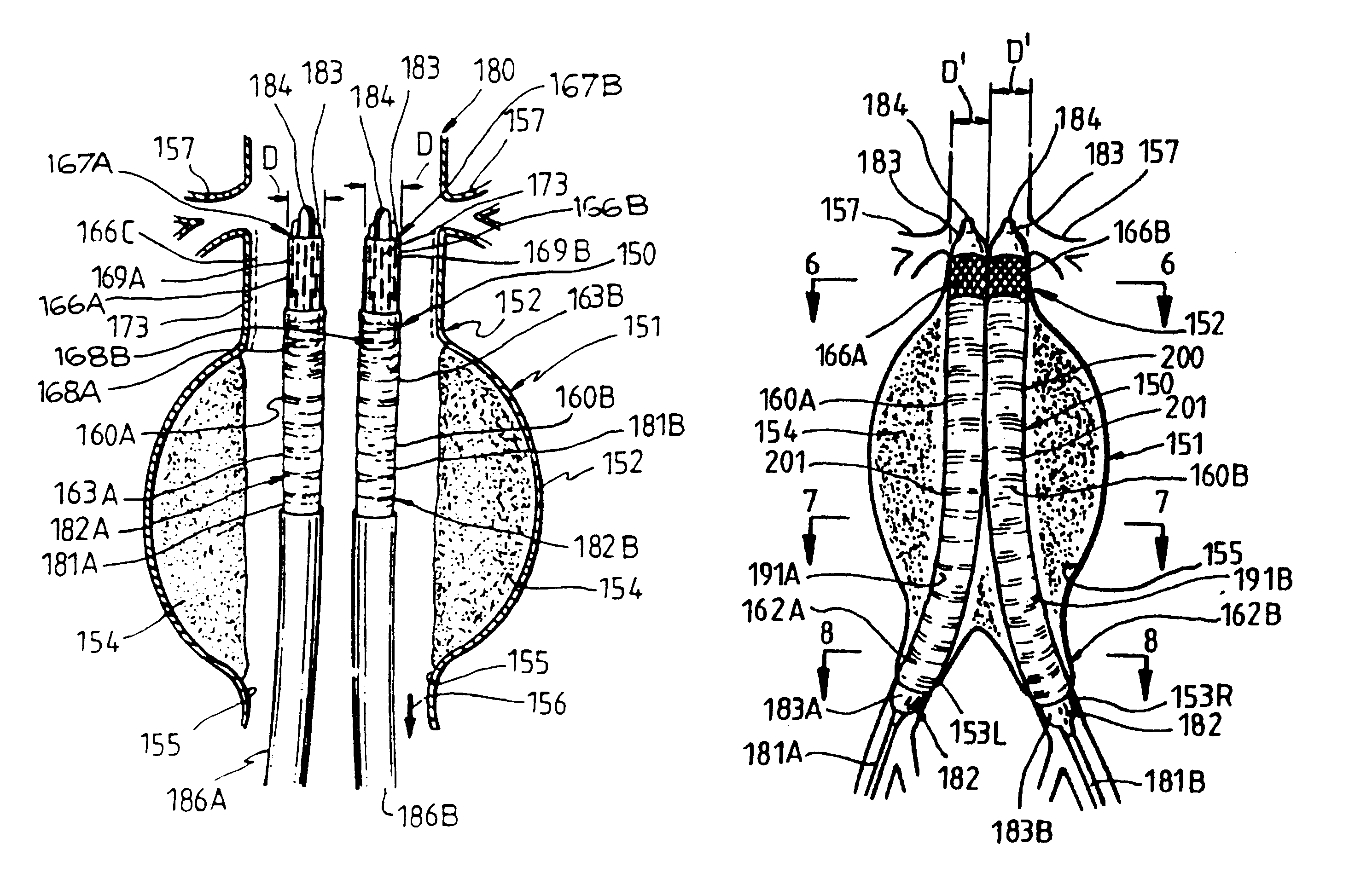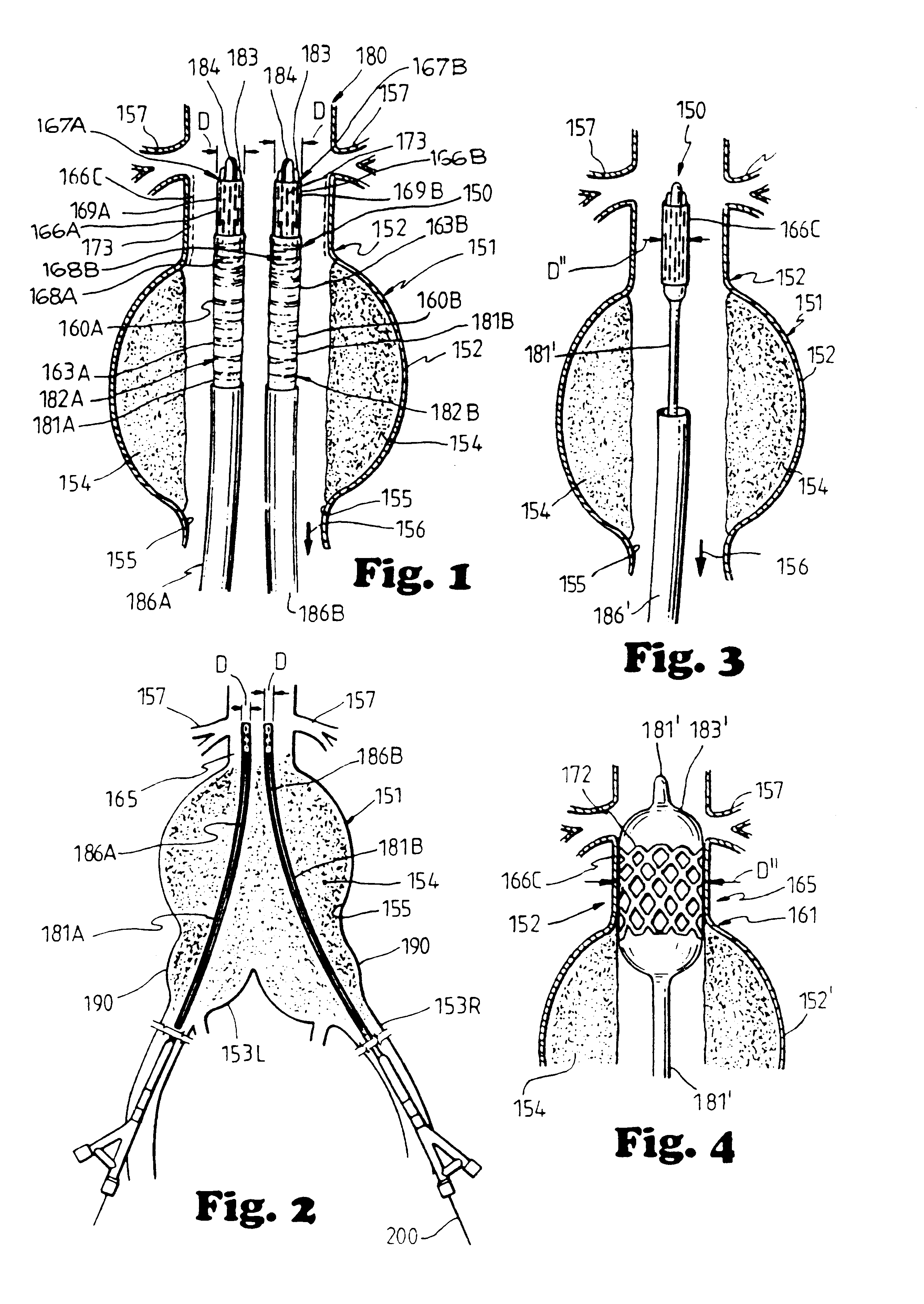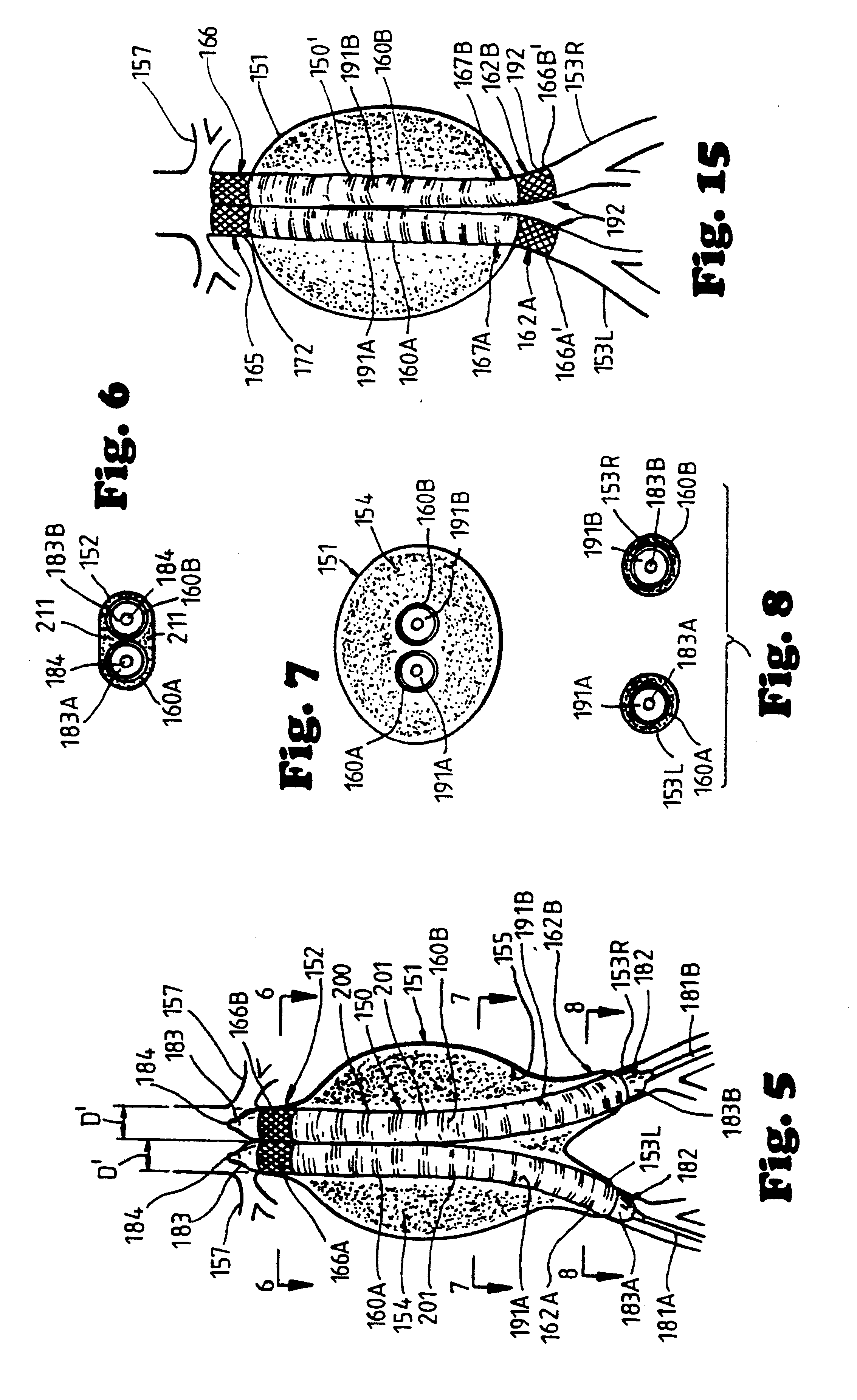Method and apparatus for bilateral intra-aortic bypass
a technology of intraaortic bypass and graft, which is applied in the field of bilateral intraaortic bypass graft, can solve the problems of major surgery involving the abdominal wall, fatal hemorrhage, and rupture of the sac, and achieves the effects of shortened recovery periods, less susceptible to kinking and/or twisting, and reduced mortality ra
- Summary
- Abstract
- Description
- Claims
- Application Information
AI Technical Summary
Benefits of technology
Problems solved by technology
Method used
Image
Examples
Embodiment Construction
In FIGS. 1, 2, 5 a bilateral intra-aortic bypass graft 150 for intraluminal delivery to repair an abdominal aortic aneurysm 151 in an aorta 152 having two iliac arteries 153L, 153R associated therewith is illustrated. Bilateral intra-aortic bypass graft 150, as well as other grafts to be hereinafter described, could also be utilized in the thoracic aorta, and can be used to repair thoracic aneurysms or thoracic dissecting aneurysms. Accordingly, use of the term "aortic aneurysm" in this specification and claims is intended to relate to and mean both abdominal aortic aneurysms and thoracic aneurysms. Aneurysm 151 includes areas of thrombosis 154, which are disposed against the interior wall surface 155 of aorta 152. Blood flows through the aorta in the direction of arrows 156. Associated with aorta 152, above aneurysm 151, are a plurality of renal arteries 157, in fluid communication with aorta 152.
With reference to FIGS. 1, 5, and 11, bypass graft 150 is seen to generally comprise: ...
PUM
 Login to View More
Login to View More Abstract
Description
Claims
Application Information
 Login to View More
Login to View More - R&D
- Intellectual Property
- Life Sciences
- Materials
- Tech Scout
- Unparalleled Data Quality
- Higher Quality Content
- 60% Fewer Hallucinations
Browse by: Latest US Patents, China's latest patents, Technical Efficacy Thesaurus, Application Domain, Technology Topic, Popular Technical Reports.
© 2025 PatSnap. All rights reserved.Legal|Privacy policy|Modern Slavery Act Transparency Statement|Sitemap|About US| Contact US: help@patsnap.com



